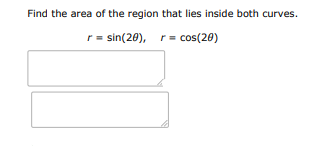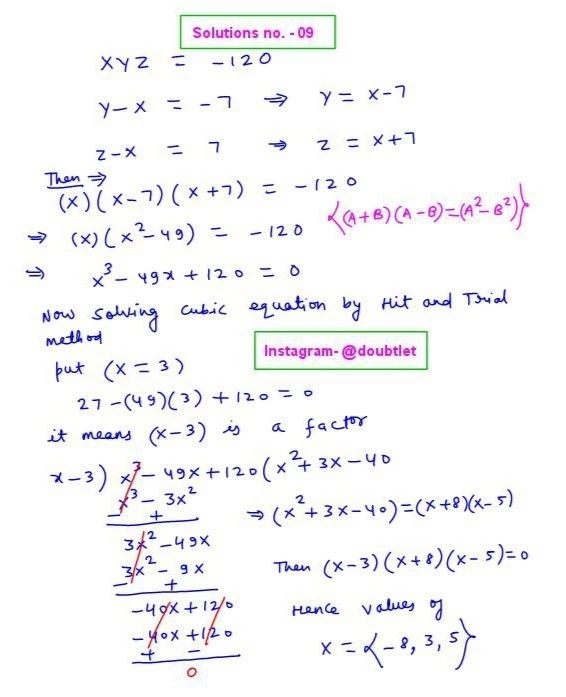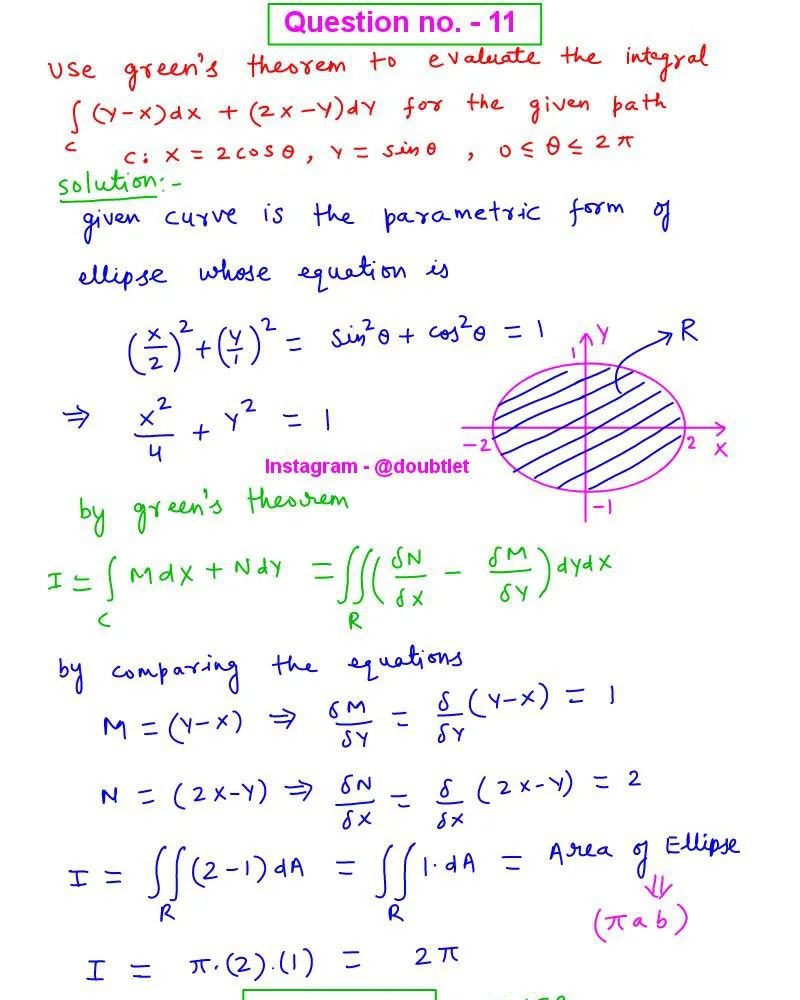
Neetesh Kumar | January 2, 2025
Calculus Homework Help
This is the solution to Math 1c
Assignment: 10.4 Question Number 13
Contact me if you need help with Homework, Assignments, Tutoring Sessions, or Exams for STEM subjects.
You can see our Testimonials or Vouches from here of the previous works I have done.
Get Homework Help
Step-by-step solution:
To determine the area of the region common to both polar curves r=sin(2θ) and r=cos(2θ), follow these steps:
1. Find the Points of Intersection:
Set the two equations equal to find the angles θ where the curves intersect:
sin(2θ)=cos(2θ)
Divide both sides by cos(2θ) (where cos(2θ)=0):
tan(2θ)=12θ=4π+nπθ=8π+2nπ,n∈Z
Thus, the points of intersection occur at:
θ=8π,85π,89π,813π
2. Determine the Limits of Integration:
The curves intersect at θ=8π,85π,89π, and 813π.
Due to the symmetry of the curves, we can calculate the area for one sector and multiply by 8 to obtain the total area.
3. Identify the Minimum Function in Each Sector:
In each sector between two consecutive points of intersection, determine which curve has the smaller r value:
- For 0≤θ≤8π: r=sin(2θ)≤r=cos(2θ)
- For 8π≤θ≤4π: r=cos(2θ)≤r=sin(2θ)
This pattern repeats in each subsequent sector due to symmetry.
4. Set Up the Integral for One Sector:
The area Asector for one sector is the sum of the areas where each function is the minimum:
Asector=21∫08π[sin(2θ)]2dθ+21∫8π4π[cos(2θ)]2dθ
5. Compute the Integrals:
a. Integral of [sin(2θ)]2:
∫[sin(2θ)]2dθ=∫21−cos(4θ)dθ=2θ−8sin(4θ)+C
Evaluating from 0 to 8π:
[2θ−8sin(4θ)]08π=(16π−8sin(2π))−(0−0)=16π−81
b. Integral of [cos(2θ)]2:
∫[cos(2θ)]2dθ=∫21+cos(4θ)dθ=2θ+8sin(4θ)+C
Evaluating from 8π to 4π:
[2θ+8sin(4θ)]8π4π=(8π+8sin(π))−(16π+8sin(2π))=16π−81
c. Total Area for One Sector:
Asector=21(16π−81)+21(16π−81)=16π−81
6. Calculate the Total Area:
Since there are 8 such sectors in the full circle:
A=8×(16π−81)=168π−1=2π−1
Final Answer:
The area of the region that lies inside both curves r=sin(2θ) and r=cos(2θ) is:
A=2π−1square units
Please comment below if you find any error in this solution.
If this solution helps, then please share this with your friends.
Please subscribe to my
Youtube channel for video solutions to similar questions.
Keep Smiling :-)















Leave a comment